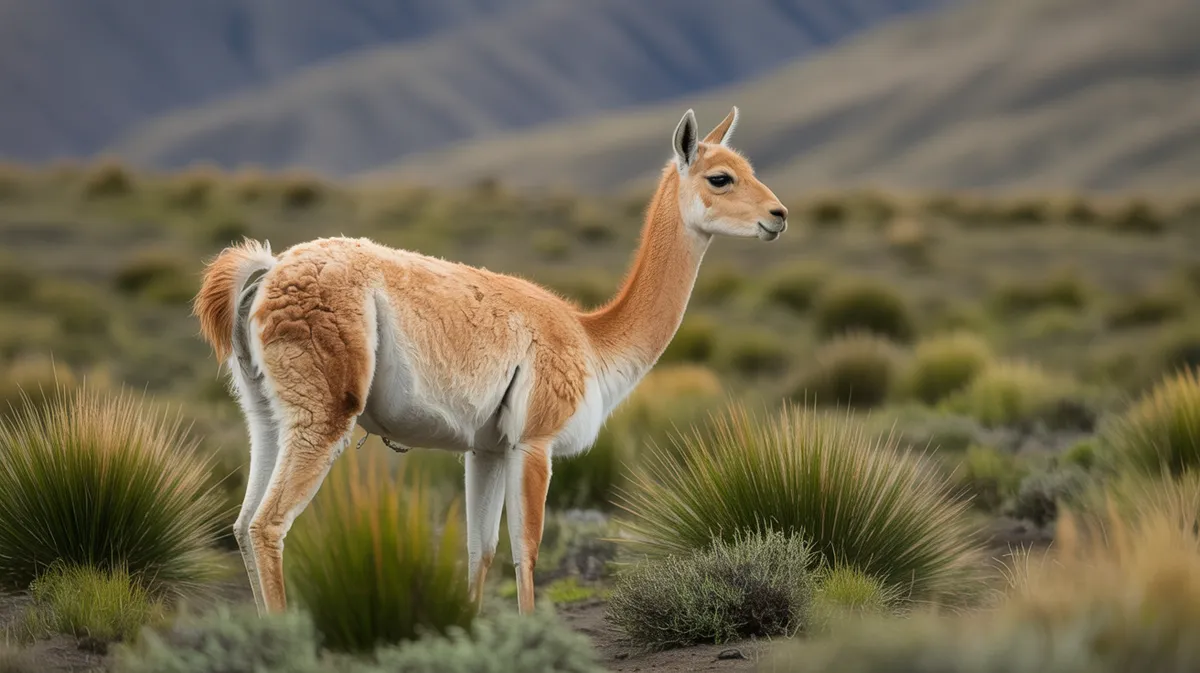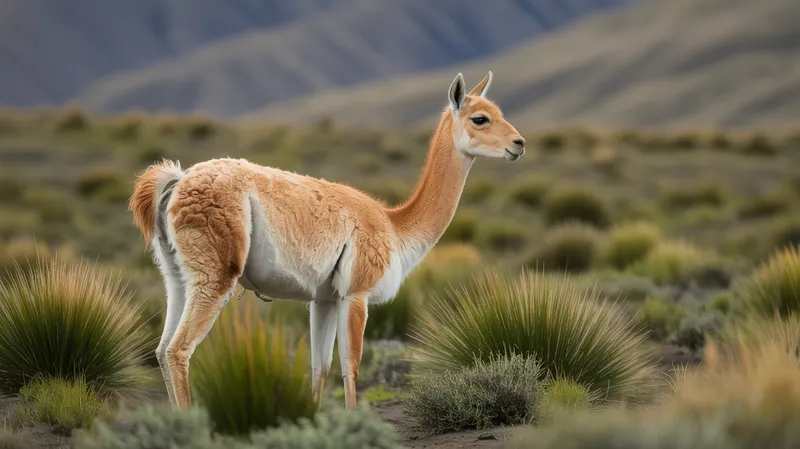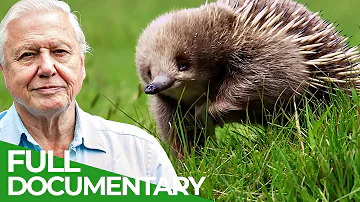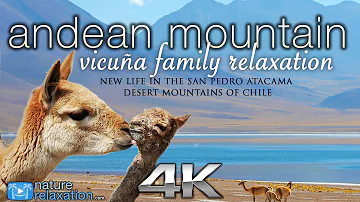
Vicuña
Vicugna vicugna

Meet the Vicuña
The vicuña is a small, slender South American camelid native to the high Andean plains. Known for its extremely fine and luxurious wool, the vicuña has long, cinnamon-colored fur with white patches on its chest and inner legs. It is highly adapted to harsh, cold environments at altitudes between 3,200 and 4,800 meters. Vicuñas are social animals, living in family groups led by a dominant male, and rely on keen senses and speed to evade predators. Once nearly extinct due to overhunting for their valuable wool, their numbers have rebounded thanks to strict conservation measures.
Classification
Mammal
Habitat
High-altitude grasslands and Andean plateaus
Diet
Herbivore
Lifespan
15-20 years
Conservation
Least Concern
Weight
35-65 kg
📖Fascinating Facts
Finest Wool
Vicuña wool fibers are only about 12 microns thick, making them softer and finer than cashmere.
High-Altitude Adaptation
Vicuñas live at elevations up to 4,800 meters, where oxygen levels are low and temperatures fluctuate dramatically.
Family Groups
Vicuñas form small family groups with one dominant male, several females, and their offspring, defending territories fiercely.
📋Detailed Description
The vicuña (Vicugna vicugna) is the smallest and most delicate of the South American camelids, standing approximately 80–90 cm at the shoulder and weighing between 35–50 kg. Its body is slender and graceful, with long, thin legs adapted for swift movement across rugged, high-altitude terrain. The fur is exceptionally fine, measuring just 12–14 microns in diameter, and is considered the finest natural fiber in the world. The coloration is predominantly a rich cinnamon-brown on the back and flanks, with white underparts and inner legs, and a distinctive white bib on the chest. Vicuñas possess large, forward-facing eyes and elongated ears, providing acute vision and hearing for predator detection. Their incisors are ever-growing, a unique adaptation among ungulates, allowing them to efficiently graze on tough, high-altitude grasses. Socially, vicuñas live in small family groups consisting of a dominant male, several females, and their offspring, while surplus males form bachelor groups. They are diurnal, spending daylight hours grazing and resting, and are highly territorial, with males vigorously defending their home ranges. Vicuñas communicate through a variety of vocalizations and postures, especially during territorial disputes or when alarmed. Reproduction is seasonal, with births synchronized to coincide with the period of greatest forage availability.
💡 Did you know?
The vicuña is the wild ancestor of the domesticated alpaca, and both were revered and protected by the ancient Inca civilization.
🔬Research & Sources
Wikipedia Summary
The vicuña or vicuna is one of the two wild South American camelids, which live in the high alpine areas of the Andes; the other camelid is the guanaco, which lives at lower elevations. Vicuñas are relatives of the llama, and are now believed to be the wild ancestor of domesticated alpacas, which are raised for their coats. Vicuñas produce small amounts of extremely fine wool, which is very expensive because the animal can be shorn only every three years and has to be caught from the wild. When knitted together, the product of the vicuña's wool is very soft and warm. The Inca valued vicuñas highly for their wool, and it was against the law for anyone but royalty to wear vicuña garments; today, the vicuña is the national animal of Peru and appears on the Peruvian coat of arms.
Last Modified: 6/9/2025
🎭Behavior & Social Structure
Vicuñas are primarily grazers, feeding on a variety of high-altitude grasses (notably species of Stipa and Festuca) and herbs found in the puna and altiplano ecosystems. They exhibit selective feeding behavior, often cropping the most nutritious and tender shoots. Grazing occurs mainly in the early morning and late afternoon, with midday spent resting and ruminating. Social interactions are structured around stable family groups, with the dominant male patrolling the territory boundaries and herding females and young. Agonistic behaviors, such as neck wrestling and chasing, are common among males during the breeding season. Alarm calls, consisting of high-pitched whistles, alert the group to the presence of predators such as pumas or Andean foxes. Vicuñas use communal dung piles, which serve both as territorial markers and as a means of parasite control. They are highly vigilant and rely on their speed (capable of running up to 47 km/h) and agility to escape threats.
👶Reproduction & Life Cycle
Breeding in vicuñas occurs once a year, typically between March and May, coinciding with the end of the rainy season. Males establish and defend territories that attract females for mating. After a gestation period of approximately 330–350 days, females give birth to a single cria (young vicuña), usually between February and April of the following year. Births are timed to maximize offspring survival, aligning with the peak of plant productivity. Crias are precocial, standing and walking within 15–30 minutes of birth, and begin grazing within a week, although they continue to nurse for 6–8 months. Maternal care is strong, with mothers fiercely protective of their young. Sexual maturity is reached at around 2 years of age for females and 3 years for males. Dispersal of juveniles occurs at about 12–18 months, when young males are expelled from the family group to join bachelor herds.
🛡️Adaptations & Survival
Vicuñas exhibit a suite of physiological and behavioral adaptations to life at high elevations (3,200–4,800 meters). Their blood contains a high concentration of red blood cells and hemoglobin with a strong affinity for oxygen, enabling efficient oxygen uptake in hypoxic conditions. The heart is relatively large for their body size, supporting enhanced circulation. Their thick, dense wool provides exceptional insulation against cold, wind, and UV radiation. Specialized footpads with soft, leathery soles allow for sure-footed movement across rocky and sandy terrain. Behavioral adaptations include synchronized birthing to exploit seasonal resource peaks, communal dung piles to reduce parasite loads, and highly developed vigilance and escape behaviors to evade predators.
🎨Cultural Significance
The vicuña has held profound cultural significance in Andean societies for millennia. In Inca civilization, vicuña wool was reserved exclusively for royalty, symbolizing nobility and divine favor. Traditional chaccu roundups, involving communal capture and shearing, continue today as both a cultural ritual and a sustainable management practice. The vicuña is the national animal of Peru, featured on the national coat of arms and currency, and is a symbol of conservation success and Andean heritage. Its wool remains a luxury commodity, highly prized in international markets for its rarity and quality.
🔬Recent Research & Discoveries
Recent research has focused on the genetic relationships between vicuñas, guanacos, and domesticated camelids, confirming the vicuña as the wild ancestor of the alpaca. Studies on population genetics have revealed significant genetic diversity, crucial for long-term viability. Ongoing ecological research investigates the impacts of climate change on high Andean grasslands and the adaptive responses of vicuñas to shifting resource availability. Conservation biology studies have documented the effectiveness of community-based management in reducing poaching and promoting sustainable use. Advances in non-invasive monitoring techniques, such as camera traps and genetic sampling from dung, are improving population assessments.
🎥Wildlife Videos

Vicuña Salvation - The greatest wildlife conservation story never told.
Vicuña Salvation tells the incredible fight for survival of the vicuña population in Peru. Vicuñas were brought back from the brink of ...
Quechua Benefit

David Attenborough Presents: Tasmania - Weird & Wonderful | Free Documentary Nature
David Attenborough presents: Tasmania - Weird & Wonderful | Wildlife Documentary Watch 'David Attenborough's Ant Mountain' ...
Free Documentary - Nature

Wildlife - The Fascinating World of Wild Animals | Full Series | Free Documentary Nature
Wildlife - The Fascinating World of Wild Animals | Wildlife Documentary Watch 'Ocean Stories - Full Series' here: ...
Free Documentary - Nature

Wild Canada - Nature's Untamed Beauty | Full Series | Free Documentary Nature
Wild Canada - Nature's Untamed Beauty | Wildlife Documentary Watch 'Darkwoods - Canada's Hidden Nature Reserve' here: ...
Free Documentary - Nature

Wild Colombia - Fantastic Creatures | The Lost Eden | Free Documentary Nature
Wild Colombia - Fantastic Creatures | The Lost Eden | Free Documentary Nature Watch 'Wild Colombia Revealed' here: ...
Free Documentary - Nature

Andean Mountain Wildlife in 4K: Vicuña Baby | Nature Relaxation Instrumental Documentary
Filmed by David Huting on the Canon 1DC in 4K UHD. The timing of getting this shot was incredible, as I was on a full day tour ...
Nature Relaxation Films
🌍Habitat Information
The Vicuña typically inhabits High-altitude grasslands and Andean plateaus environments. Vicuñas have adapted to their environments with specialized features and behaviors.
Primary Habitat:
High-altitude grasslands and Andean plateaus
More detailed habitat information will be available soon.
🛡️Conservation Status
The Vicuña is currently classified as Least Concern. Conservation efforts are crucial for preserving this species for future generations.
Common Threats:
- 🏠Habitat loss and fragmentation
- 🌡️Climate change impacts
- 🎯Hunting and poaching
- 🏭Human-wildlife conflict
⚠️Threats & Conservation Challenges
Historically, vicuñas faced severe population declines due to overhunting for their prized wool, with numbers dropping below 10,000 by the mid-20th century. Intensive conservation efforts, including legal protection, community-based management, and regulated shearing (chaccu), have enabled a dramatic recovery, with current estimates exceeding 350,000 individuals. However, threats persist: illegal poaching for wool, habitat degradation from overgrazing by livestock, competition for water resources, and climate change-related shifts in vegetation and water availability. Hybridization with domestic alpacas in some areas poses a genetic threat. Continued vigilance and adaptive management are required to maintain population stability.
🔬Scientific Classification
Scientific Name
Vicugna vicugna
Classification Hierarchy
🔍 About Taxonomic Classification
Taxonomic classification is a hierarchical system used by scientists to classify and organize living organisms based on shared characteristics and evolutionary relationships.
The system moves from broad categories (Kingdom) to increasingly specific ones, with each animal's scientific name typically consisting of its Genus and species.
📝Community Notes
Share your observations and insights about the Vicuña with our community of wildlife enthusiasts.
Join Our Community
Sign in to share your observations and connect with fellow wildlife enthusiasts.
Sign In to ContributeNo community notes yet
Be the first to share your observations about the Vicuña!
Explore Vicuña
Select a tab above to learn more about this amazing animal.
📸Photo Gallery
No photos available for this animal yet.
🌟Discover More Wildlife
Continue your journey of discovery with more fascinating animals from our database
